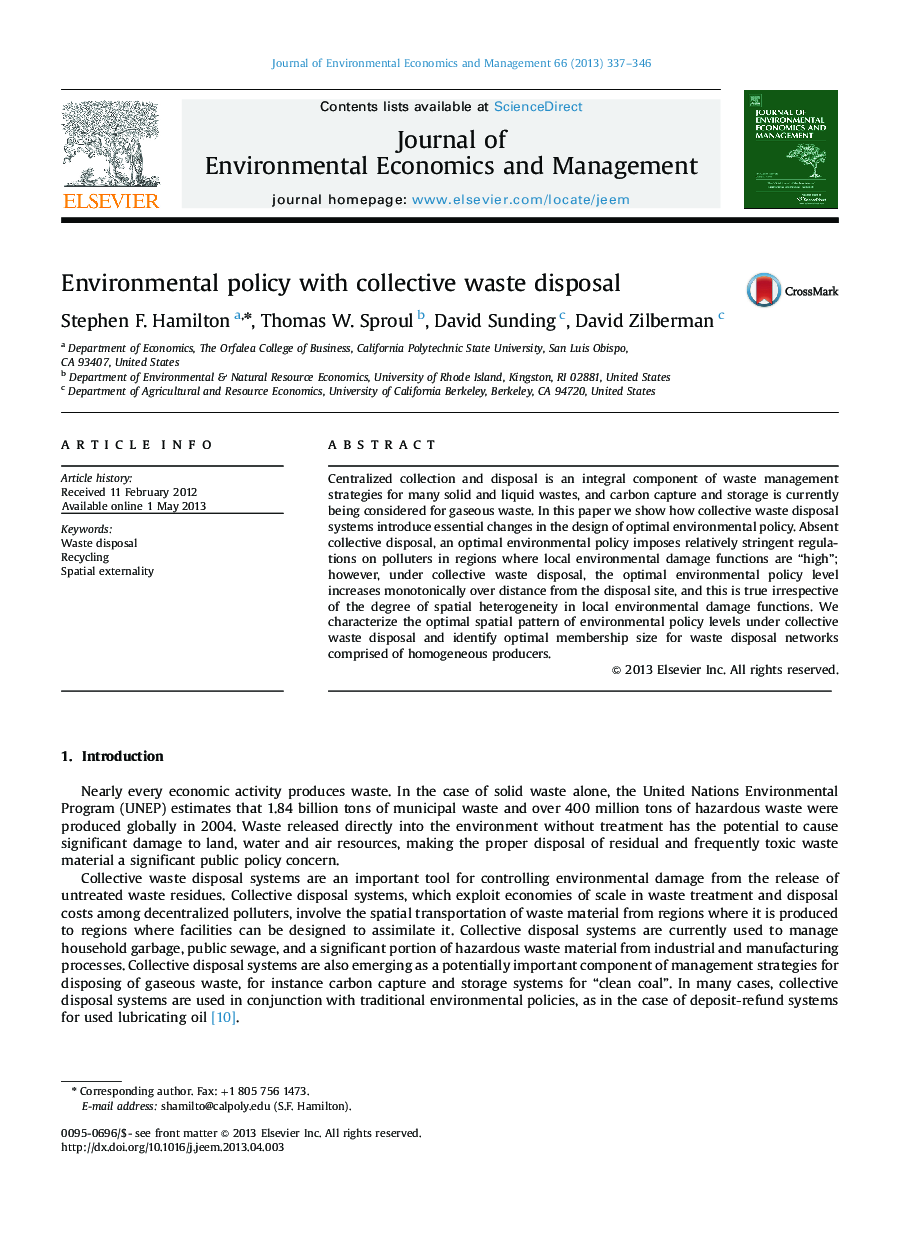| Article ID | Journal | Published Year | Pages | File Type |
|---|---|---|---|---|
| 958834 | Journal of Environmental Economics and Management | 2013 | 10 Pages |
Centralized collection and disposal is an integral component of waste management strategies for many solid and liquid wastes, and carbon capture and storage is currently being considered for gaseous waste. In this paper we show how collective waste disposal systems introduce essential changes in the design of optimal environmental policy. Absent collective disposal, an optimal environmental policy imposes relatively stringent regulations on polluters in regions where local environmental damage functions are “high”; however, under collective waste disposal, the optimal environmental policy level increases monotonically over distance from the disposal site, and this is true irrespective of the degree of spatial heterogeneity in local environmental damage functions. We characterize the optimal spatial pattern of environmental policy levels under collective waste disposal and identify optimal membership size for waste disposal networks comprised of homogeneous producers.
